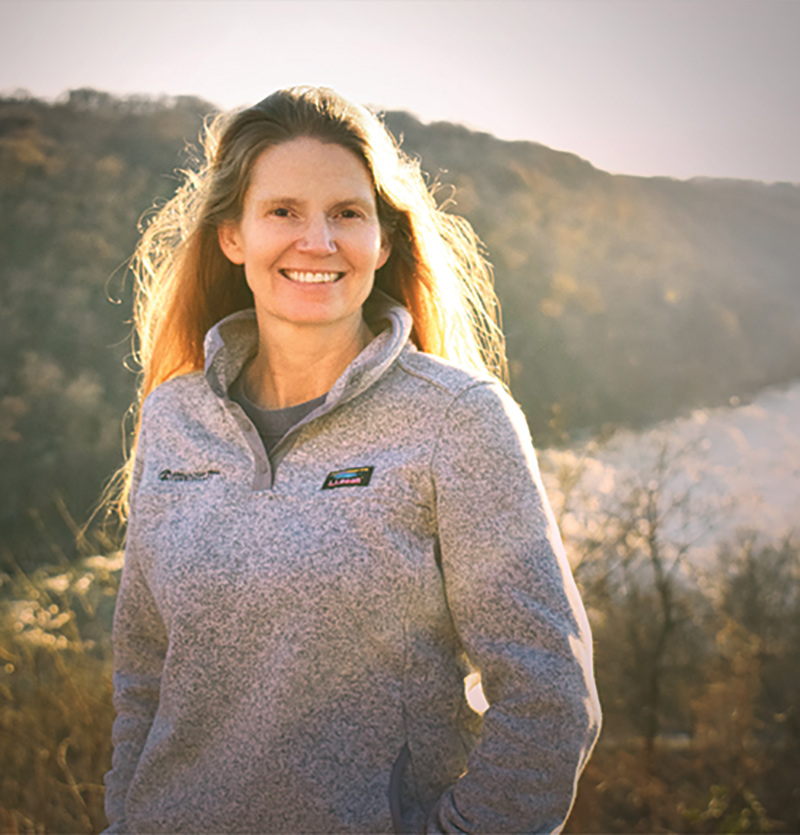SHOW A.T. COMMUNITIES YOUR LOVE
ABOUT A YEAR AGO, I WOKE up in an Airbnb in Pawling, New York. Before a full day of meetings, I pulled on my boots, stretched a minute on the deck, and headed up the hill for a quick hike on the Appalachian Trail. How did we find this lovely landing spot? It was advertised as the “A.T. House.”
On a recent Pennsylvania trip, I stayed at the Shawnee Inn, a historic property that sits across the Delaware River from the forested hills of Delaware Water Gap National Recreation Area. Approximately 25 miles of the Appalachian Trail run through this park. The Shawnee routinely sends guests out on A.T. adventures and offers guided hikes on other trails in the area, along with river trips and meals made with garden-fresh produce.

In Hot Springs, North Carolina, the Smoky Mountain Diner offers a “Hungry Hiker” burger on its lunch menu. Farther south, near Bryson City, the River’s End restaurant is sandwiched between the best of land and water recreation — the A.T. and the whitewater of the Nantahala River.
From Georgia to Maine, close to 50 communities and counties are designated Appalachian Trail Communities. These and many other towns, villages, and small cities near the Trail are hospitality centers not only for the A.T., but also for all kinds of other outdoor recreation experiences. These communities are where visitors launch their explorations of the Wild East — the important corridor of open space that consists of and surrounds the Appalachian Trail. Where hikers, walkers, bicyclists, paddlers, birders, and you name it provision, refuel, and rest up.
Each one of these communities offers travelers something unique to explore, experience and, learn. They invite visitors to linger — to arrive early, stay longer, or take time off the Trail or the river or the road — and immerse themselves in something new.
These communities are also connecting points for stewardship of the Trail and the wild and rural landscapes that surround it. They are key threads in the fabric that maintains the A.T., protects open space and habitat, and connects residents and visitors to opportunities to learn about wildlife, native plants, natural history, and cultural roots. The volunteer vacations that some Appalachian Trail maintaining clubs offer are an interesting crossover between hospitality and hands-on support, turning Trail maintenance into a revenue-generating, community-building experience.
As we have begun to engage A.T. Communities to lay the groundwork for the Appalachian Trail Conservancy’s new Geotourism initiative, we’ve found a deep commitment to marrying local business and economic development, tourism promotion, and conservation. In the Harlem Valley — where I woke up last spring to an early morning hike from the doorstep of the “A.T. House”— the collaboration that the Harlem Valley Appalachian Trail Community is fostering to support its Geotourism work has spawned a new level of cooperation among local, regional, and national conservation groups active in the area. These groups are now exploring how to create a unified voice for conservation in the Harlem Valley and put their collective muscle behind shared priorities.
This spring, take some time to explore a community near the Trail. Use it as a base camp for a day or two, take a hike and enjoy a meal, fine companionship, and the hospitality, local culture, and events that these places distinctively offer. Your dollars and commitment to the health of the wild and rural landscapes accessible from these communities will have more ripple effects than you can imagine.
